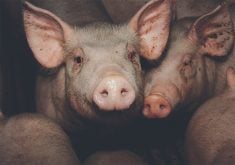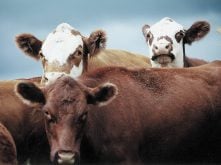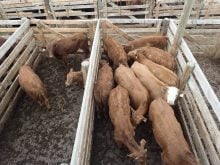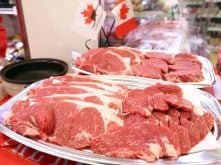Steinbach, Man. – If a market-savvy cattle producer had lots of land, grass and a highly efficient operation, how much money could he make buying yearlings in the spring and selling them in the fall?
With all of those cards in his hand, Robert Krentz of Evergreen Land and Cattle Co. Ltd. near Steinbach, Man., said he has averaged $50 a head over the past nine years.
Krentz hosted a tour of his operation for visitors on the Manitoba Forage Council’s provincial grazing tour in late July, which focused on producers in eastern Manitoba.
Read Also
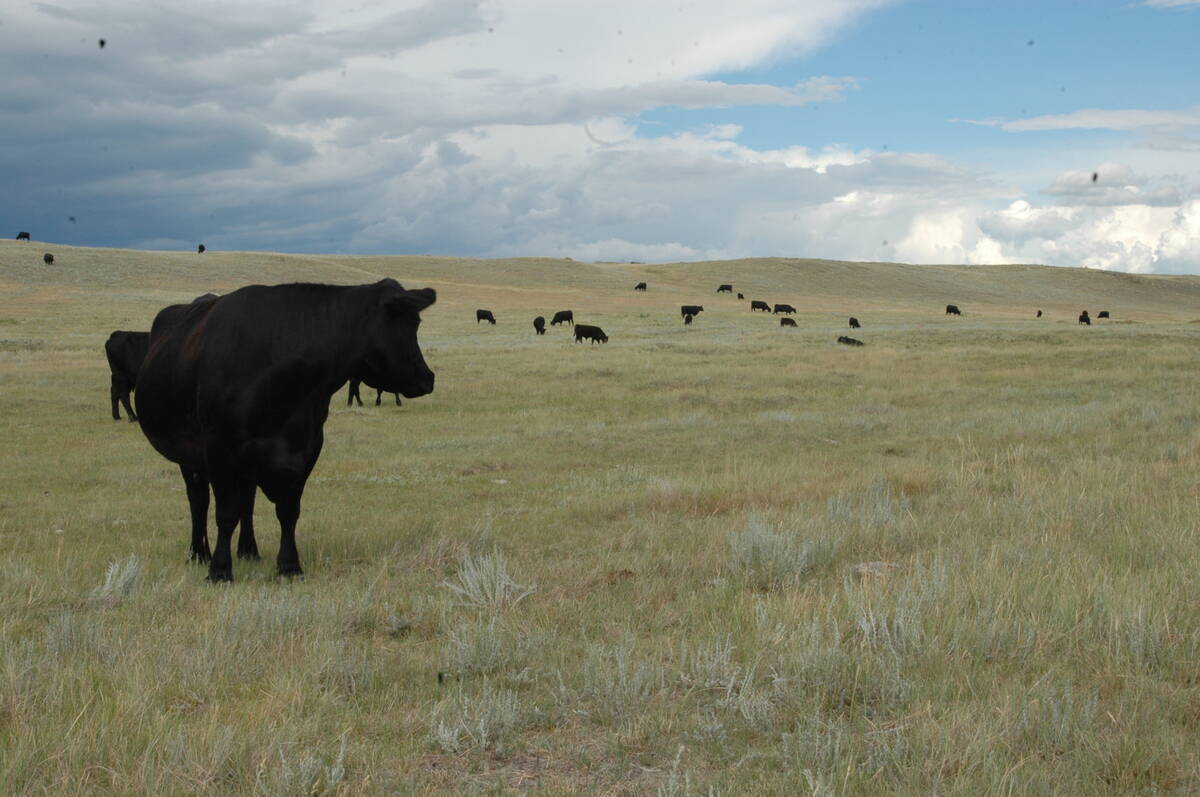
Saskatchewan Cattle Association struggles with lower marketings
This year’s change in the provincial checkoff has allowed the Saskatchewan Cattle Association to breathe a little easier when it comes to finances.
Three decades ago, Krentz moved to the area near the western edge of Sandilands Provincial Forest with his father and set up a beef operation. They spent the summers putting up hay and silage for sale.
In 1995, one of the area’s first hog barns applied manure to Krentz’s hay land.
The hired man was cutting hay and Krentz’s wife, Jodi, took fuel out to the field. The swaths were so thick that when she drove over them the hay got wrapped around the pick-up truck’s drive shaft.
“She came back all excited, swearing and everything else that she had broken down. I went out to take a look. I realized, my goodness, is that ever a lot of hay,” he said.
Krentz said the potential for explosive growth from putting hog manure on forages became clear to him at that moment. The first application tripled hay production.
After seeing good results from his own 250 head cow-calf rotational grazing experiment in the early 1990s, he started looking at ways to benefit from the increased productivity.
For the past nine years, Krentz has been buying 4,500 to 5,000 calves in February and running them on grass until the end of October on six sections of land fertilized with hog manure.
In an area with 500 millimetres of rain per year, he uses rotational grazing to capture maximum value from the fast-growing quackgrass that makes up the majority of his pasture.
Over the years, Krentz has found that only the top third of his pastures has significant feed value.
He knows when to rotate his cattle to a new paddock by watching his cattle’s backsides. When they are grazing high protein forages, their stools are more liquid than solid.
“When I put cattle into a new paddock, the next day all of them are dirty in the back. As they stay on that, it gets less and less,” Krentz said.
“I always tell my kid that if we go into the pasture and see no manure on the cattle, it’s time to move them. He’ll say, ‘Dad, there’s still lots of grass here.’ But I say, ‘the grass is no good. Move the cattle.’ ”
With a target gain of 1.8 to two pounds per yearling per day, Krentz skims the cream of the grass and moves on, with an eye on leaving ample supplies for later in the season.
“If I make cattle eat it right down to the bottom, I would be down to 1.5 lb. per day gains,” he said.
With only 140 to 150 days to put flesh on the yearlings, rotating through paddocks pays off in higher daily gains and more grass later in the season. Achieving only 200 lb. per animal instead of 300 could mean the difference between profit and loss.
“We can brag about how much feed we have or how much money we can make. In the end, it’s the banker that you have to satisfy.”
As for breeds, Krentz buys any kind of cattle that will do well. Experience tells him that crossbred cattle have fewer problems with shipping fever, foot rot and pinkeye.
Steers gain better, by 50 to 75 lb. per animal, but heifers are cheaper than steers, which offsets the difference.
Lately, his operation has been hit hard by the rising Canadian dollar.
“If the dollar moves 10 basis points, then you’ve lost that on all your product. You could be the most efficient player and have the most grass, but make no money because the one variable was missing.”
With thousands of animals brought in each year, Krentz needs to have an extensive animal health regimen. Deaths average less than one percent a year.
He runs his cattle through an indoor handling facility, with a steel sorting tub and squeeze chute covered with sheet steel to prevent the animals from seeing through the bars. He recently installed a steel grate in front of the squeeze chute and in his sick barn to prevent injuries.
“I do 4,500 head and every year I lose two cattle because they slip and break a leg. I put a steel grate in there and not another animal has fallen down,” he said.
Backrest bars over the chutes prevent yearlings from rearing up on top of each other and falling over backward. He used to waste half an hour or more straightening out each animal that had become backward in the chute.
Above the squeeze chute is a canvas umbrella that enshrouds a forced air heater. When giving injections in cold weather, the added heat keeps the syringes from freezing.
“A lot of little things in handling cattle make it so much simpler and faster,” he said.
New arrivals are tattooed in the ear and given an eight-way shot and a 10 cc dose of penicillin to combat shipping fever.
“We know that these animals are going to be stressed in the very beginning,” he said.
The preventive dose cleans out their lungs, he added.
New arrivals might be healthy on Day 1, but the real risk of illness generally comes in the period until Day 10. In mid-May, after the first six weeks on grass, he runs them through the facility again for an implant and to treat them for parasites.
Two years ago Krentz was blindsided by an outbreak of lungworm.
“I had never seen lungworm in my life. I went out to the pasture and saw two dead animals. I thought, ‘that’s odd,’ but I didn’t phone the vet,” he said. “The next day two more were dead. I lost 15 head before I had it under control.”
To treat the herd en masse, he tried mixing Safe-Guard with grain and poured it out on the pasture.
“They just walked up to it and then walked away. I was tearing my hair out. I just blew three grand because they didn’t eat it. It stayed on the ground.”
Now he puts the medication, which costs about $2.50 per head, in the mineral mix before the first week of July.
Foot rot and pinkeye are common problems. Krentz uses all-terrain vehicles to round up and sort cattle for foot rot treatment, but generally lets nature take its course in the two to three pinkeye cases that he gets per 500 head herd each year.
“They are so hard to handle in a big herd. If we have one pinkeye victim and we come in with four wheelers, by the time we get the animal sorted, it would have jumped on top of us or would’ve hurt itself because it can’t see.”
So long as the animal can find water, a pinkeye case will still gain weight and recover its eyesight within six weeks, he said.
“I know it’s very painful for the animal because when they first get it they start tearing up. If I can, I will go in and treat them.”
Krentz’s nine pastures are divided into eight paddocks each, with a central corral built of welded sucker rod and steel posts.
Each corral has a loading ramp, a cattle oiler over the entry gate and water and mineral stations. Underground lines from the hog barns on each section supply the water and power for the electric fences. Herd sizes range from 500 to 700 head.
In the mid-1990s, Krentz sold one quarter on each section to hog producers “relatively cheaply” with an agreement that they provide him with 49 years of free rent to use the land for grazing. In return, the hog barns are able to spread manure on the remaining three quarters.
To prevent phosphorus overloading on the sandy soil, the hog producers are now separating the solids from the liquids. The phosphorus-rich solids are trucked farther away to areas where levels are lower, while the liquids are spread at a target rate of 100 lb. per acre of nitrogen equivalent on Krentz’s land.
When he researched the issue of grazing cattle on hog manure-fertilized pastures 10 years ago on a Smithfield property in North Carolina, he was warned that phosphorus would soon become the enemy. Already, the soil is at maximum productivity and response to added manure has plateaued, he said.
Tighter phosphorus regulations may mean more changes eventually.
“They are going to be cutting back on the amount of manure that can be applied per acre,” he said.
A donkey in every section acts as predator control and a mother figure for each herd. If a coyote enters the pasture, the donkey is the first to walk out and challenge it. The yearlings pick up on that and adopt the donkey as a protector.
“He’s such a slow moving guy that everybody hangs around him. When we want to gather them with two four wheelers and start yelling, that donkey knows why and starts trotting towards the centre and all the cattle follow him in.”
Stampeding herds were a constant worry before the donkeys were introduced. The yearlings are kept on an 80-acre holding area on the home quarter when they start arriving in spring. The holding area is fenced with railway ties and sucker rod around the perimeter.
“If the cattle were startled at night, they would go right through the fence,” he said. “Now with steel fencing and a donkey in with them, I never have a problem.”
Cattle are prepared for grass with a warm-up diet of hay and screening pellets, which aims for a gain of 1.6 to 1.75 lb. per day. The transition of rumen bacteria from haylage or silage to grass takes 21 to 28 days, he added.
“That’s exactly the first three to four weeks that people talk about how cattle won’t gain when they get to pasture,” he said. “If I gave you steak all the time, then tried to switch you to wieners, you’d back off your feed, too.”
Krentz grazes his cattle until Nov. 1. By carefully rotating his pastures, he is able to keep the grass lush into
October.
Krentz said he has tried marketing his cattle through various channels, including internet sales and direct bidding. Last year he retained ownership and finished them in a feedlot in Nebraska. This year, he sold them on the futures market in February.
“The Canadian dollar kept going up and cattle went up, too. I shouldn’t have sold them and I should’ve locked in my dollar. But what I should or shouldn’t have done I guess is history.”
Looking back, he was forced to outbid American buyers at an exchange rate of around $1.14. Now, the rate is $1.04.
“When I sell cattle like this at $900 each, you do the math on what I just lost because of the exchange,” he said. “This dollar rise is going to be really hard on the cattle industry. We just came out of BSE and now the Canadian dollar is going up. It’s like, what else can they do to us?”



